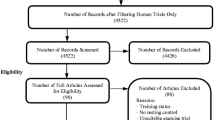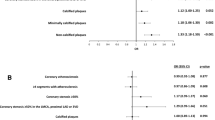Abstract
Markers of inflammation, such as C-reactive protein (CRP) and fibrinogen, have been shown to be predictive of cardiovascular disease. In the Physicians Health Study, the magnitude of reduction in the risk of myocardial infarction with aspirin therapy was related to baseline CRP levels, raising the possibility that the protective effect of aspirin may be due to antiinflammatory properties in addition to its antiplatelet effect. We therefore investigated whether aspirin therapy lowers CRP levels. Because heavy physical exertion is a well-known trigger of myocardial infarction, we also investigated the effect of aspirin on CRP levels before and after strenuous exercise. Thirty-two healthy men, aged 29 ± 6 years, were enrolled in a randomized, double-blind, parallel study. Blood samples were obtained immediately before and after maximal treadmill exercise at baseline and following 7 days of aspirin therapy (81 or 325 mg). The levels of CRP, as measured by ELISA, increased by 13% following exercise (P < 0.0001). However, aspirin did not significantly alter CRP levels, either at rest (0.81 ± 0.13 mg/L before aspirin vs. 0.78 ± 0.13 mg/L on aspirin) or following exercise (0.92 ± 0.13 mg/L before aspirin vs. 0.86 ± 0.13 mg/L on aspirin), P = 0.73. When the resting and postexercise data were combined, the levels were 0.87 ± 0.13 mg/L before aspirin and 0.82 ± 0.13 mg/L on aspirin (a nonsignificant 6% reduction, P = 0.20). In conclusion, in healthy male subjects CRP levels were not significantly reduced by short-term aspirin therapy. Our data, taking together with other reports, suggest that aspirin may not affect the levels of inflammatory markers. However, further studies are needed with a longer duration of therapy, among subjects with coronary heart disease, and using additional markers of inflammation besides CRP to determine the long-term effects of aspirin use.
Similar content being viewed by others
References
Berk BC, Weintraub WS, Alexander RW. Elevation of C-reactive protein in “active” coronary artery disease. Am J Cardiol 1990;65:168–172.
Ridker PM, Cushman M, Stampfer MJ, Tracy RP, Hennekens CH. Inflammation, aspirin, and the risk of cardiovascular disease in apparently healthy men. N Engl J Med 1997;336:973–979.
Thompson SG, Kienast J, Pyke SD, Haverkate F, van de Loo JC. Hemostatic factors and the risk of myocardial infarction or sudden death in patients with angina pectoris. European Concerted Action on Thrombosis and Disabilities Angina Pectoris Study Group. N Engl J Med 1995;332:635–641.
Liuzzo G, Biasucci LM, Gallimore JR, et al. The prognostic value of C-reactive protein and serum amyloid a protein in severe unstable angina. N Engl J Med 1994;331:417–424.
McEroy GK. Salicylates general statement: Nonsteroid anti-inflammatory agent. In: McEroy GK, ed. AHFS Drug Information 95. Bethesda, MD. The American Society of Health System Pharmacists, 1995:1273–1285.
Eap CB, Baumann P. The a1-acid glycoprotein: Structure and possible functions in the acute phase response. In: Andrzej Mackiewicz, ed. Acute Phase Proteins. Boca Patour FLI CRC Press, 1993:107–115.
Mittleman MA, Maclure M, Tofler GH, Sherwood JB, Goldberg RJ, Mulle, JE. Triggering of acute myocardial infarction by heavy physical exertion. Protection against triggering by regular exertion. Determinants of Myocardial Infarction Onset Study Investigators. N Engl J Med 1993;329:1677–1683.
Feng D, McKenna C, Murillo J, et al. Effect of aspirin dosage and enteric coating on platelet reactivity. Am J Cardiol 1997;80:189–193.
Macy EM, Hayes TE, Tracy RP. Variability in the measurement of C-reactive protein in healthy subjects: Implications for reference intervals and epidemiological applications. Clin Chem 1997;43:52–58.
Fox E, Kuo J, Tilling L, Ulrich C. Comparing repeated measurements of the same individuals. In: The SigmaStat Statistical Software User's Manual. San Rafael, CA: Jandel Scientific, 1997:48–75.
Richardson PD, Davies MJ, Born GV. Influence of plaque configuration and stress distribution on fissuring of coronary atherosclerotic plaques. Lancet 1989;2:941–944.
Lendon CL, Davies MJ, Born GV, Richardson PD. Atherosclerotic plaque caps are locally weakened when macrophages density is increased. Atherosclerosis 1991;87: 87–90.
van der Wal AC, Becker AE, van der Loos CM, Das PK. Site of intimal rupture or erosion of thrombosed coronary atherosclerotic plaques is characterized by an inflammatory process irrespective of the dominant plaque morphology. Circulation 1994;89:36–44.
Moreno PR, Falk E, Palacios IF, Newell JB, Fuster V, Fallon JT. Macrophage infiltration in acute coronary syndromes. Implications for plaque rupture. Circulation 1994;90: 775–778.
Welgus HG, Campbell EJ, Cury JD, et al. Neutral metalloproteinases produced by human mononuclear phagocytes. Enzyme profile, regulation, and expression during cellular development. J Clin Invest 1990;86:1496–1502.
Henney AM, Wakeley PR, Davies MJ, et al. Localization of stromelysin gene expression in atherosclerotic plaques by in situ hybridization. Proc Natl Acad Sci USA 1991;88: 8154–8158.
Marinkovic S, Jahreis GP, Wong GG, Baumann H. IL-6 modulates the synthesis of a specific set of acute phase plasma proteins in vivo. J Immunol 1989;142:808–812.
Moshage HJ, Roelofs HM, van Pelt JF, et al. The effect of interleukin-1, interleukin-6 and its interrelationship on the synthesis of serum amyloid A and C-reactive protein in primary cultures of adult human hepatocytes. Biochem Biophys Res Commun 1988;155:112–117.
Lewis HD, Jr., Davis JW, Archibald DG, et al. Protective effects of aspirin against acute myocardial infarction and death in men with unstable angina. Results of a Veterans Administration Cooperative Study. N Engl J Med 1983; 309:396–403.
Ridker PM, Manson JE, Gaziano JM, Buring JE, Hennekens CH. Low-dose aspirin therapy for chronic stable angina. A randomized, placebo-controlled clinical trial. Ann Intern Med 1991;114:835–839.
McConkey B, Crockson RA, Crockson AP, Wilkinson AR. The effects of some anti-inflammatory drugs on the acutephase proteins in rheumatoid arthritis. Q J Med 1973;42:785–791.
Aylward M, Maddock J, Wheeldon R, Parker RJ. A study of the influence of various antirheumatic drug regimens on serum acute-phase proteins, plasma tryptophan, and erythrocyte sedimentation rate in rheumatoid arthritis. Rheuma Rehab 1975;14:101–114.
Prichard PJ, Poniatowska TJ, Willars JE, Ravenscroft AT, Hawkey CJ. Effect in man of aspirin, standard indomethacin, and sustained release indomethacin preparations on gastric bleeding. Br J Clin Pharmacol 1988;26: 167–172.
Krusius T, Hirvonen M, Vahtera E, Kala R. Short-term aspirin treatment does not reduce plasma fibrinogen concentration in young healthy adults. Thromb Res 1994;75: 653–656.
Hind CR, Savage CO, Winearls CG, Pepys MB. Objective monitoring of disease activity in polyarteritis by measurement of serum C reactive protein concentration. Br Med J Clin Res 1984;288:1027–1030.
Serhan CN. Lipoxins and novel aspirin-triggered 15-epilipoxins (ATL): A jungle of cell-cell interactions or a therapeutic opportunity. Prostaglandins 1997;53:107–137.
Taylor C, Rogers G, Goodman C, et al. Hematologic, iron-related, and acute-phase protein responses to sustained strenuous exercise. J App Physiol 1987;62:464–469.
Weight LM, Alexander D, Jacobs P. Strenuous exercise: Analogous to the acute-phase response? Clin Sci 1991;81: 677–683.
Finkel A, Cumming GR. Effects of exercise in the cold on blood clotting and platelets. J Appl Physiol 1965;20:423–424.
Statland BE, Winkel P, Bokelund H. Factors contributing to intra-individual variation of serum constituents. 2. Effects of exercise and diet on variation of serum constituents in healthy subjects. Clin Chem 1973;19:1380–1383.
Zeller JM, Landay AL, Lint TF, Gewurz H. Enhancement of human peripheral blood monocyte respiratory burst activity by aggregated C-reactive protein. J Leukocyte Biol 1986; 40:769–783.
Potempa LA, Zeller JM, Fiedel BA, Kinoshita CM, Gewurz H. Stimulation of human neutrophils, monocytes, and platelets by modified C-reactive protein (CRP) expressing a neoantigenic specificity. Inflammation 1988;12:391–405.
Steel DM, Whitehead AS. The major acute phase reactants: C-reactive protein, serum amyloid P component and serum amyloid A protein. Immunol Today 1994;15:81–88.
Cermak J, Key N, Bach R, Balla J, Vercelloti G. C-reactive protein induces human peripheral blood monocytes to synthesize tissue factor. Blood 1993;82:513–520.
Author information
Authors and Affiliations
Rights and permissions
About this article
Cite this article
Feng, D., Tracy, R.P., Lipinska, I. et al. Effect of Short-Term Aspirin Use on C-Reactive Protein. J Thromb Thrombolysis 9, 37–41 (2000). https://doi.org/10.1023/A:1018644212794
Issue Date:
DOI: https://doi.org/10.1023/A:1018644212794




